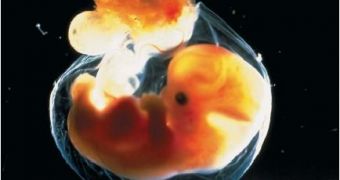Common knowledge says that a child has two parents. But what about three biological parents? A team at the Newcastle University has created human embryos containing DNA from two women and a man, a technology that one day could be a therapy for couples, for getting kids free of genetic diseases. Still, these embryos are primarily produced by one man and one woman.
"We are not trying to alter genes, we're just trying to swap a small proportion of the bad ones for some good ones," co-author Patrick Chinnery, a professor of neurogenetics at Newcastle University, told National Geographic News.
The skipped bad genes are those encountered in the mitochondria, organelles producing cell's energy, and encountered outside the nucleus in any cell, including the female egg. DNA is encountered only in the nucleus and mithocondria, but while nuclear DNA comes 50 % from the mother and 50 % from the mother, mithocondrial DNA comes 100 % from the mother as all mitochondria come from the mother.
Mutations in the mitochondrial DNA cause severe conditions like muscular dystrophy, epilepsy, strokes, and mental retardation.
The research team took the nucleus of embryos carrying defective mitochondria in the woman's egg and transplanted it into an nucleus-emptied egg donated from a second woman with healthy mitochondria.
"Most of the genes that make you who you are are inside the nucleus. We're not going anywhere near that," said Chinnery, pointing that in fact the child had only 2 parents.
10 such embryos have been achieved, but they were allowed to develop only 5 days.
"If successful, this research could give families who might otherwise have a bleak future a chance to avoid some very grave diseases," said Francoise Shenfield, a fertility expert with the European Society of Human Reproduction and Embryology. Such tests carried on mice in Japan led to healthy mice offspring, with corrected mitochondria genes.
"Further tests to assess the safety and efficacy of the process are necessary before it can be offered as a potential treatment," said Shenfield.

 14 DAY TRIAL //
14 DAY TRIAL //